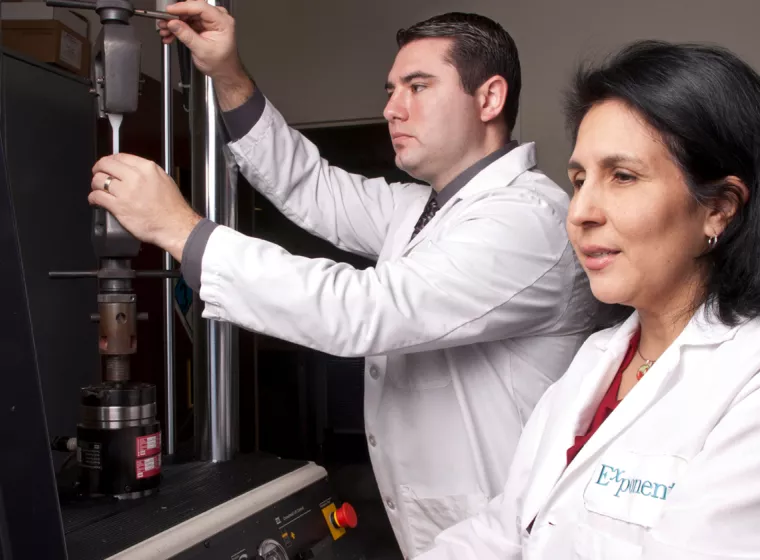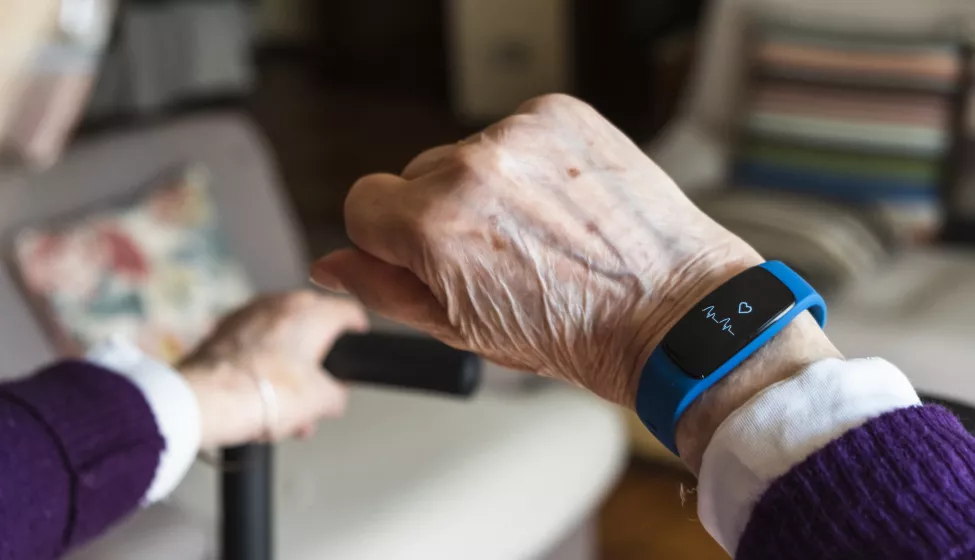January 4, 2024
What Life Sciences Challenges Can We Help You Solve?
UpdATED October 2025
Four questions for developing inclusive digital solutions by identifying women-specific requirements and endpoints
From a smartphone microphone that can support an Alzheimer's diagnosis to a wearable device that helps predict stroke, digital devices are poised to play a transformative role in the ability of healthcare stakeholders to collect key "endpoints": criteria used by care providers to assess health and disease.
By capturing patient-generated health data right where patients live and work via wearables, apps, and sensors, digital health technologies (DHTs) are fostering earlier diagnoses, amassing information on treatment effectiveness and safety in the real world, and enabling providers to track disease progression and clinical burden outside of traditional settings.
However, gender bias in DHTs is a known issue that limits their optimal use for women. To address this, the Food and Drug Administration released draft guidance in June 2024 describing the form, content, and manner of diversity action plans for applicable clinical studies. Separately, FDA's Women's Health Research roadmap, updated in Jan. 2025, is dedicated to improvements in diagnoses and treatment of the health conditions that impact women, including promoting emerging technologies and methodologies and identifying sex differences related to their use.
These efforts come at a time when just "4% of investments in health care companies in 2023 were directed to women's health companies," even though women have been identified as 75% more likely to use digital tools than men, providing a wide-open space for greater growth in the "femtech industry."
Learn more about Exponent's perspective on "Engineering Approaches to Understand and Treat Women's Health" in the National Academy of Engineering Journal
Realizing the benefits of digital health technologies for women
Important developments in DHTs could have significant impacts on the health of women and other underrepresented and underserved populations, including real-time tracking of biosensor data that enables users to track their health status; integration with smart devices that allows users to easily access and share data with their healthcare providers for evidence-based treatment decisions; or the use of machine learning and predictive analytics to document user patterns and trends that could lead to identifying demographic-specific triggers at the population level and generating recommendations for lifestyle adjustments or early medical interventions at the individual level.
For women, these digital solutions could support healthcare services such as:
- Real-time tracking for varying levels of an endpoint throughout the menstrual cycle
- Communications with OB-GYN or other healthcare practitioners around triggers or patterns that may deviate from symptom presentation in males
- Collecting real-world evidence around peri-menopausal symptoms for instance that are unique for each individual without the fear of being dismissed
Identifying and mitigating bias in the use of DHTs can help pharmaceutical companies, device manufacturers, and other tech and life science companies create more effective products and therapeutic interventions to ultimately improve public health outcomes for women. Below, we explore four questions for developing inclusive digital health solutions by identifying requirements and endpoints that are specific to women's experiences and needs as users, patients, and clinical research participants.

#1: Are women appropriately represented in your clinical research?
Women make up more than 50% of the U.S. population but are continually underrepresented in clinical trials. Because of the lack of parity in research, assessing key factors that drive clinical outcomes is challenging, such as why women are twice as likely to experience adverse drug events compared to men.
Stroke is a good example of the impacts of inequitable representation of women in clinical trials. Women account for half (53.5%) of the estimated 795,000 annual new or recurrent strokes in the U.S., making it the third leading cause of death for women, but fifth for men. Women also experience atypical symptoms and stroke risks compared to men, so not accounting for this unique stroke profile makes early detection and treatment efforts less effective.
Including adequate representation of women such that studies are powered to deliver insights for this specific population — and for the diversity of women in the population — in clinical trials and observational studies can help reduce gaps in our understanding of gender-specific symptom presentation or relevant outcomes. Studies that are designed with clear criteria (endpoints) of the requirements for all types of women can support this effort.
Important developments in DHTs could have significant impacts on the health of women and other underrepresented and underserved populations
#2: Are you measuring endpoints that matter to women throughout their disease journey?
To fully assess the safety and efficacy of any therapy, key endpoints relevant to stakeholders throughout the value chain — patients and their caregivers, providers, payers, and regulators — must be measured and reported.
Unlike traditional endpoints that assess disease in a clinical setting, digital endpoints evaluate a patient's disease and the effectiveness of a treatment outside of the clinical environment. This allows for a more accurate view of the patient's complete health journey.
Ideally, digital endpoints should be considered when real-world data (RWD) collection is required in real time, especially when healthcare provider visits are few and far between. Digital endpoints are also valuable when care is fragmented and a longitudinal view of the patient health journey is needed, such as in cases of rare diseases where patients see a variety of providers in various care settings.
Emerging DHTs can have an impact for all patients throughout their journeys — from prevention to diagnosis and treatment to prognosis management. When used appropriately, digital endpoints can:
- Help monitor symptoms, especially in those at higher risk, facilitating earlier and more accurate diagnoses
- Monitor the long-term effectiveness and safety of therapies in the real world, informing whether a treatment protocol needs to be updated
- Assess disease progression, including relapses, and support evaluating whether treatment should be escalated
A growing body of research is reporting that gender differences affect a variety of health conditions, meaning endpoints derived from clinical trials where the majority of participants are male may not accurately or reliably apply to women's experiences. One way to identify relevant digital endpoints for women is to carefully consider the experiences and contextual factors that are unique to their biology and to probe women-specific physiological markers.
For example, with stroke, women experience different symptoms than men related to factors such as consciousness, mental status, and headache, which are compounded by hormonal considerations, e.g., blood coagulation, immunity. Cardiovascular disease is another good example — and the number one cause of death in women. In addition to chest pain, shortness of breath, and pain or discomfort in the jaw, neck, back, arm, or shoulder, women may also experience gender-specific symptoms during a heart attack, such as nausea, vomiting, light headedness, and fatigue. Existing studies do not allow us to derive gender-specific insights that may inform interventions designed for women and reduce the impact of cardiovascular disease in that population.
One way to capture women's DHT user requirements is by deploying a user experience methodology, wherein qualitative approaches like in-depth interviews can generate insights into the needs and values of women. Quantitative means, such as surveys conducted among the target population of women, can also be used to test endpoints.
#3: Are you using digital tools (devices, sensors, apps) that are fit-for-purpose?
Once endpoints are selected (the specific symptoms, physiological factors, etc. that require monitoring), it is important to verify and validate whether the device design can support diagnostics and treatment — and whether it meets the user's needs. In other words, is the device fit-for-purpose?
To verify a device design, life sciences firms that adopt DHTs will want to evaluate whether design outputs (e.g., components and form factor of the DHT) are matched to design inputs (e.g., functional, performance, and safety requirements), which must also be developed around women-specific requirements, such as device size, user interface, and unique data-collection demands.

After design verification, the process of design validation will determine whether the device is fit-for-purpose by considering whether all the elements work together to produce the desired endpoints and assessing the quality of information provided by the endpoints to the care providers.
Validating DHTs for subgroups of women can also increase the ability of a tool to produce accurate and relevant measurements. Specifically, subjecting DHTs to user experience research can enable stakeholders to proactively address potential challenges (e.g., ergonomics, sensory and motor requirements, mismatch with the user's expectations, user safety, satisfaction, potential failures), satisfy regulatory requirements, and identify barriers to adoption.
Validating DHTs for subgroups of women can also increase the ability of a tool to produce accurate and relevant measurements.
#4: Are DHT insights shared with appropriate stakeholders to inform care and improve outcomes for women?
Data collection via digital means should follow regulatory guidance to ensure data is credible and robust. FDA evaluates and approves or clears new medical devices, including DHTs, through a rigorous premarket review process. Depending on the level of risk associated with a particular device, the premarket review process may include a variety of requirements, including clinical testing, device performance testing, and human factors testing.
In the European Union, Medical Device Regulation (EU) 2017/745 now requires all medical device manufacturers to continually and proactively demonstrate the safety and performance of their devices in a process known as postmarket clinical follow-up (PMCF).
As part of the DHT lifecycle, the following considerations for continuous monitoring, improvement, approval, and release of DHTs should be factored into post-launch activities.
Continuous Monitoring:
- Ongoing surveillance of DHT performance
- Real-time data collection for safety and effectiveness
Continuous Improvement:
- Iterative enhancement based on user feedback and data insights
- Adaptation to technological advancements and emerging needs
Continuous Approval:
- Streamlined regulatory reviews for updates and iterations
- Flexible frameworks accommodating rapid changes in DHTs
Continuous Release:
- Accelerated deployment of updated DHTs to users
- Continued user access to the latest, safest, and most effective versions
Once data collection from key endpoints is completed, it is critical for stakeholders to communicate clinical findings to promote informed decision-making on issues ranging from prescription versus over-the-counter use to patient compliance and improve access to therapies for women by addressing issues related to regulatory clearance, approval, label expansion, and coverage and reimbursement.
Providing the option for individual or aggregated clinical data to also be shared with women more broadly can support their understanding of the research and may enhance their engagement with DHT clinical trials and related treatments at a population level. Given the private and sensitive nature of the data collected, considerations around data privacy and secure data sharing are paramount. Use of femtech must incorporate current standards and regulations, such as the EU General Data Protection Regulation.
Making real-world impact on the gender gap in digital health
The growing femtech market provides timely opportunities for developers to apply the four questions outlined above to generate unique insights that are relevant to women and inform decision-making to close the gender gap and improve health outcomes in this underserved population. Once designed to assess women-specific endpoints, DHTs can enable decentralized trials that incorporate larger, more diverse populations, enhancing the ability of healthcare stakeholders to develop solutions more attuned to the needs of women in the real world.
What Can We Help You Solve?
Exponent's multidisciplinary health and data scientists, biomedical engineers, and regulatory experts have extensive experience assessing women's health products. We are uniquely positioned to evaluate the risks and benefits of pharmaceuticals, medical devices, and diagnostics for women based on real-world evidence and data collection by leveraging state-of-the-art research facilities, remote sensors, smart devices, and cloud computing capabilities.

Regulatory Compliance for Medical Products
Experienced regulatory support for medical devices, pharmaceuticals, and combination products.

Medical Technology Assessment Program
Rapid, expert assessments of medical devices and technologies, surgical implants, and wearable medical technologies.

Next-Gen Wearables in Healthcare
Effectively demonstrate the clinical, experiential, and economic value of wearable devices.

Medical Device Design & Development Support
Crucial medical device design and development analyses to empower your decision-making.
![Medical Devices, Implants & Surgical Tools [MCE]](/sites/default/files/styles/cards_home_card/public/media/images/GettyImages-1182458826.jpg.webp?itok=z7lVBn-v)
Medical Devices
Design verification, usability studies, electrical medical equipment configuration, and laboratory testing.

Healthcare and Life Sciences Value & Outcomes Assessment
Strategic guidance for medical product value and access, including drugs, vaccines, and medical devices.

Real-World Evidence Consulting
Leverage real-world data to improve healthcare decisions.


